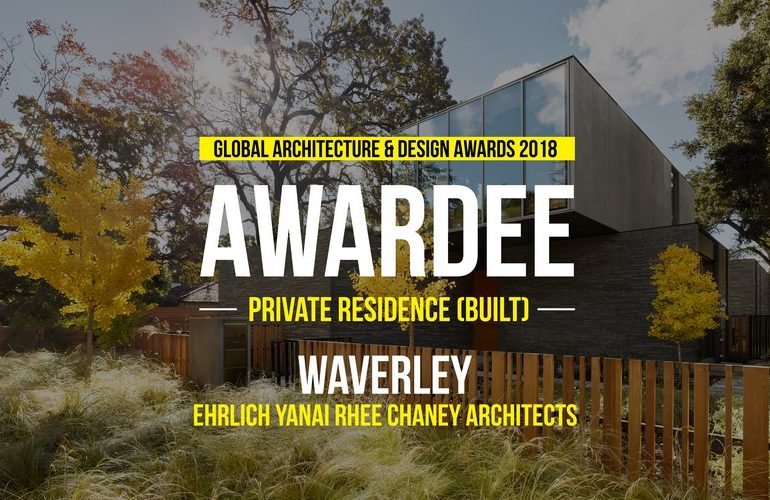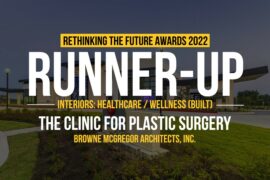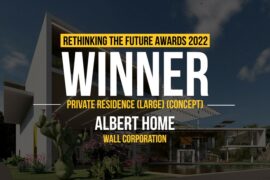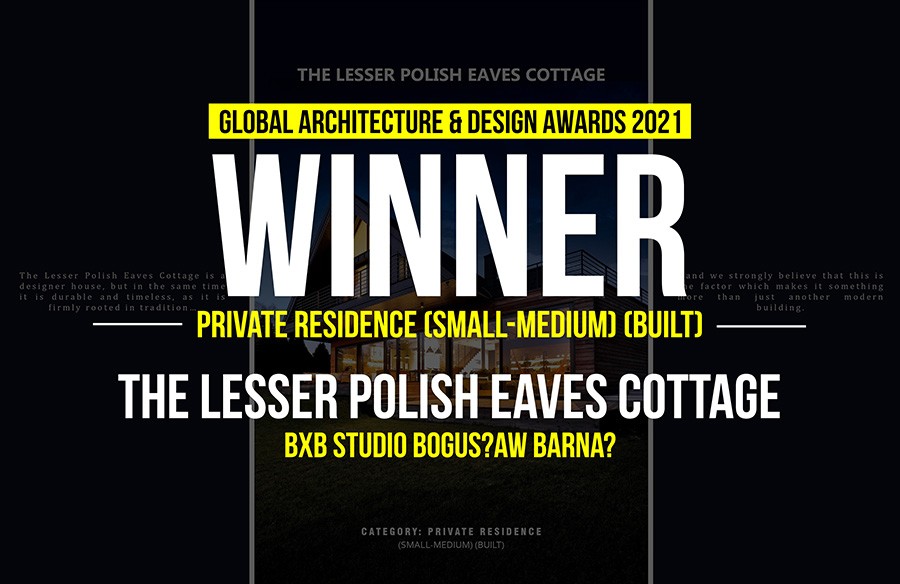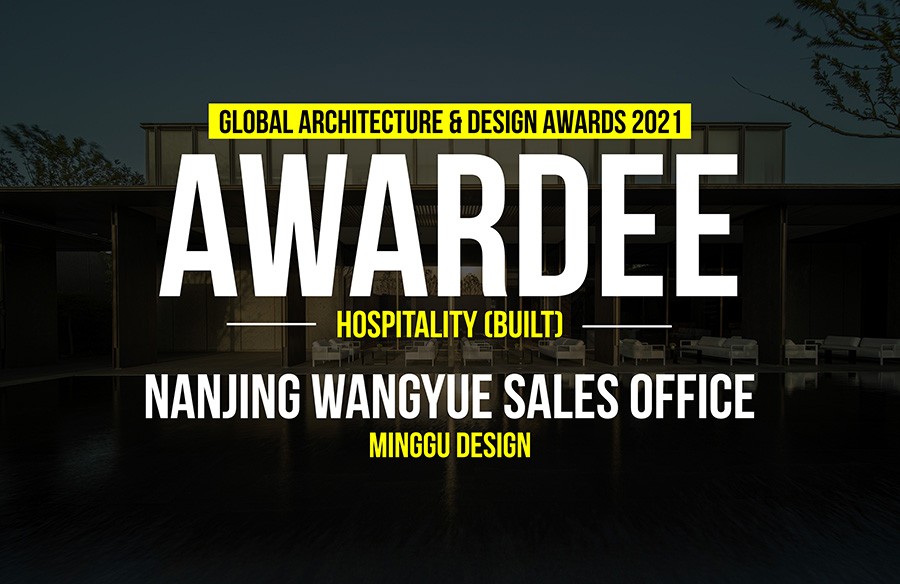Designed for a young couple, the 5,000 sf home and 1,700 sf back house sit on a double lot in a 1920’s neighborhood. The architecture is a study in strong simple composition and highly refined materiality with an emphasis on craft.
Global Architecture & Design Awards 2018
Second Award | Category: Private Residence (Built)
Architects: Ehrlich Yanai Rhee Chaney Architects
Team Members: Steven Ehrlich, Takashi Yanai
Country: United States

The ground floor volumes wrapped in an elongated hand-fired brick from Denmark, emphasizes the horizontality of the architecture that lays solidly on the land. Bronze-trimmed ceiling planes slide between the brick masses, and floor-to-ceiling glazed openings are captured by thin-profiled bronze frames.

In contrast to the grounded brick volumes, the second floor is clad in stainless steel panels and oversized aluminum-framed windows. The lightness and openness of the second floor is nestled among the oak-tree canopies of the site. A spacious office is sitting lightly there, atop, like a glass treehouse amid the leafy canopy.

At the basement level, a wine cellar and tasting room open to a sunken landscaped courtyard.
A 30ft by 10ft continuous pane of glass runs alongside the grand stairwell of floating stone steps, connecting the three levels of the house. This dramatic moment in the sequence of progressing through the house helps visitors feel connected to the lush landscape outside.
Inside the house, materials were selected for their unique craftsman-style quality; one of the many custom-designed element is a sliding steel mesh screen that wraps around to enclose the kitchen for privacy, separating this from the more public “guest hosting” areas adjacent.
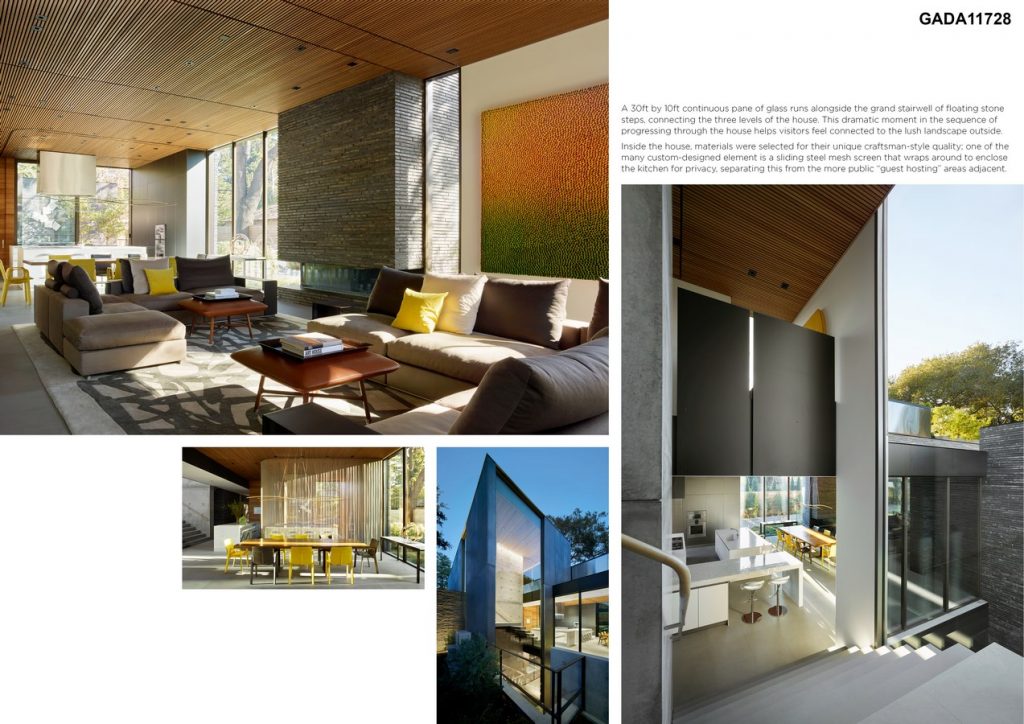
The freestanding “back house” set back into the site is a zen-like fitness/yoga studio as well as a guesthouse with a kitchenette. This dramatic stone mass opens up completely in the center to give the impression of exercising outdoors. The landscape integrates California native plant species, grasses and trees to compliment the materiality of the architecture.
Sustainability
Literally from start to finish, this project implemented sustainable strategies, beginning with the recycling and donation of all material from the demolished home that was on site when the clients purchased the land. Throughout construction the team carefully selected building materials such as FSC certified lumber framing and BIBS wool insulation, and designed in efficient systems and minimal water usage.
Thoughtfully designed planting with predominantly low water use plant selection as well as a high efficiency drip-irrigation system resulted in water use equaling only half of the allowable amount per code. The site is majority planted and softscape, and the minimal areas of paving are all permeable.

To accommodate the clients’ lifestyle, infrastructure for charging of two (2) electrical vehicles was installed as well as smart technology and zoned climate control to locally address climate needs in rare times that HVAC was needed. Throughout the residence natural ventilation was made possible by purposefully placed operable windows and fans to help circulate the air. Ample natural light through Low-E windows and skylights were installed throughout, as well as LED lighting, while overhangs at East, South and West glazing help shade the rooms.
If you’ve missed participating in this award, don’t worry. RTF’s next series of Awards for Excellence in Architecture & Design – is open for Registration.
Click Here

